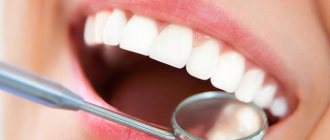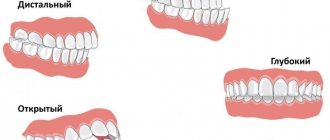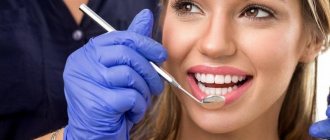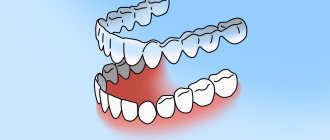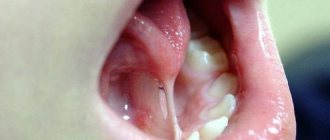Everything you would like to know about correcting your bite and straightening your teeth with braces.
Let's be honest: in modern realities, a beautiful smile is the norm, and it is necessary to get rid of dental imperfections. But, having set such a goal, it is desirable to have reliable information about existing methods and upcoming tests. We tried to collect in one article all the most important things about braces in order to save you from having to look for answers on your own on the Internet, where the truth is mixed with myths and advertising fluff.
Important! In the article, prices are indicated for St. Petersburg and the Leningrad region.
How are braces different from aligners?
This question worries many: is it possible to pay more, but get by wearing transparent removable aligners? The truth is that nice aligners can only cope with minor problems (for example, with one tooth that has grown incorrectly), but only fixed structures - those same “ugly braces” - can create an orthodontic load to shift the dentition.
As for cap-aligners, to achieve the effect, it is recommended to wear them at least 22 hours a day, removing them only during meals. As practice shows, a person often violates such rules by being distracted, forgetting, or simply allowing himself some indulgence. Strictly speaking, aligners are not intended to correct bites, and if they are positioned as such on the clinic’s website, it is better to turn to other specialists.
And the financial point: you will have to pay not more for the aligners, but much more, because during the treatment period they need to be changed at least 15 times (and sometimes much more), so the average minimum cost of correction with the help of aligners should be considered an amount of about 250- 300 thousand rubles.
Installing and wearing braces: does it hurt?
When installing braces, the vast majority of patients do not experience any noticeable pain, but discomfort certainly appears, and you will have to get used to the braces - for some faster, for others longer, on average - 1-2 days. The exception is, perhaps, people with a very low pain threshold or with increased impressionability - it is from them that the myths about the pain of installing and wearing braces come.
In fact, sometimes there is irritation of the mucous membranes of the lips and cheeks. To solve this problem, a special wax is used, which the doctor will definitely suggest after installation.
Conclusion
Installing braces is a complex multi-stage process that requires precision, high qualifications and professionalism from the dentist. Different brace systems have differences in installation. To ensure that the procedure is quick and comfortable, it is important to choose a clinic with a good reputation. Leonid Gorbunov's dentistry employs responsible orthodontists with extensive experience, so the effectiveness of treatment is guaranteed.
Installation video
Posted by:
I’ll take off my braces, a couple of years will pass, and my teeth will return to their place... is this true?
But this is true - but from the practice of past years! Now, after removing braces, the dentition is secured using a special non-removable retainer apparatus; previously this was not always done - hence the accumulated complaints. Today, orthodontists are required to install such a device.
A retainer is a thin wire that is installed on the inside of the front teeth and prevents them from moving apart. And this is for the rest of your life, but you shouldn’t worry: the delay is imperceptible, those around you don’t see it, and if it breaks, it’s easy to fix—just don’t delay your visit to the doctor.
Another problem is more pressing: sometimes, after straightening the dentition, previously hidden aesthetic defects (for example, different lengths of teeth) become noticeable. In this case, you will really have to resort to restoration or buy expensive veneers.
Important! The orthodontist must notice such defects and warn the patient before starting treatment.
Do braces damage enamel and lead to caries?
No, the tight fit of the braces completely eliminates the penetration of food debris and microbes into the tooth; Dental enamel glue used in practice is harmless, moreover, it contains the useful element fluorine. The brace-lock even protects the tooth in a certain way.
But improper care of braces is really fraught with trouble: oral hygiene after installation of an orthopedic structure requires more attention and responsibility due to the increased accumulation of plaque. And where there is plaque, there is caries!
Is it necessary to use additional products to clean braces?
On forums (and sometimes in the recommendations of “experts”!) there are numerous additional products that supposedly make oral hygiene easier in the presence of braces (rinses, ultrasonic brushes, etc.)
In fact, with a responsible approach, it is quite possible to get by with three basic tools (toothbrush, dental floss, brush). In this case, you should not rely on someone else’s opinion. The quality of care will be assessed by a doctor who conducts regular examinations, and he will also recommend additional remedies, if necessary.
Rules of care
The design features of braces systems increase the likelihood of developing inflammatory and carious processes in the oral cavity, so you need to take special care of your teeth during the treatment period.
Be sure to follow the following recommendations:
- brush your teeth after every main meal;
- in the morning and evening you need to use special (V-shaped, mono-beam) toothbrushes and brushes;
- use an irrigator and rinse aids.
Parental supervision, especially in the case of younger children, increases the effectiveness of care.
It is also necessary to monitor the child’s diet: you should not eat solid foods (nuts, crackers, seeds), or sticky foods. It is not recommended to drink drinks with food colorings, and you should avoid sports that pose a risk of injury.
You need to brush your teeth with braces not only with a regular brush, but also with a special brush.
Is there a need to give up your usual food?
As a rule, when installing a brace system, the doctor will actually announce “forbidden” foods, and this list looks quite depressing (cookies, chips, seeds/nuts, crackers, chewing gum, pizza, chocolate bars, etc. - everything that can stick to the structure , creating conditions for the proliferation of microbes, or damaging it). But in this case, the doctor’s recommendations should be approached in a differentiated manner: there is a clear reinsurance here, the only thing that is actually required from the patient is caution.
Is it true that sapphire braces are the best?
Sapphire braces are much more expensive than iron braces, but their advantages do not lie in the effectiveness of treatment. Moreover, in reliability they are inferior to metal ones. But on the teeth, such brace systems look much more aesthetically pleasing, since transparent brace locks are almost invisible.
Let us clarify: the precious natural stone sapphire has nothing to do with the production of such briquettes; we are talking about artificially grown crystals.
By the way, there are also cheaper transparent braces - ceramic (much more expensive than metal ones, but not as expensive as sapphires) and plastic designs. Only the former are too fragile and unstable in relation to food dyes (can lead to yellowing of teeth), and the latter are intended only for short-term use.
Which braces are best for a child?
Wearing orthodontics is a long process, and the structure is almost always noticeable on the teeth. If the question arises about when to get braces for a teenager, he often refuses for fear of ridicule from his peers. Modern dentistry offers systems that differ in appearance and cost. The specific type is determined by the doctor, based on the volume of treatment and the condition of the teeth. You can discuss options with him and choose the one that suits parents and child.
The most common types of braces used in children are:
- Lingual. This design is attached to the inner surface of the tooth, maintaining a natural smile. Their effectiveness is not inferior to conventional metal ones, but there are significant disadvantages - due to the peculiarities of their location, it is more difficult to maintain hygiene and notice damage to the enamel in a timely manner; the wear period is usually extended. Also, lingual braces interfere with the tongue when pronouncing sounds, so a common side effect is impaired diction.
- Metal. Such braces have been used for a very long time and have proven their effectiveness even in the most advanced cases. When metal braces are recommended for children, age plays a special role. They are inexpensive compared to their analogues, but are too noticeable on the teeth, so they are not very popular among teenagers. In addition to the price, the metal structure is distinguished by its reliability - the system holds up well and is difficult to damage.
- Sapphire. Made from artificial sapphires, they are almost invisible on the teeth due to the transparency of the material. The smile remains completely natural, and this makes this type of braces very popular. But they have two main disadvantages - fragility and price. The cost of the structure is approximately 1.5 times higher than its metal counterpart, and is also noticeably inferior in wear resistance.
- Unligated. The absence of ligatures - connecting elements for fixing the arch - makes the braces less noticeable. But these are not the only advantages. It’s easier to care for your teeth with such a system, and you can visit the doctor less often, because you don’t have to replace fasteners. The main and, perhaps, the only disadvantage is the cost: it is noticeably higher compared to simple metal ones.
- Ceramic. This type of braces is made from dental ceramics, so they are almost invisible on the teeth, and the quality of correction is comparable to metal. They are quite durable, but at the same time they cost significantly more and are difficult to maintain. If the child is already a teenager and can handle hygiene independently, a ceramic system will be an excellent solution.
- Plates. These are not exactly braces, but essentially they also belong to orthoconstructions. They are inexpensive, easy to care for and comfortable to wear. But with the help of plates, only minor violations can be corrected at an early age, when the jaw is still growing. It can not be used all day long or from an earlier age, so this alternative to braces is well suited for preschool children.
Installing braces scares many people: children because of the visibility of the structures, parents because of the price, and everyone together because of the complexity of the procedure and care. But often orthodontic structures are the only way to make a beautiful smile and maintain oral health. And if you have problems with your bite, then this is also a way to maintain proper digestion and clear diction.
We told you at what age children get braces and what kind they are. Take care of your teeth, consult a doctor in a timely manner - and then the reflection in the mirror will delight you with a beautiful smile!
How much do simple metal braces cost?
The remarkable cheapness of hardware is just a myth supported by some clinics. Indeed, by indicating the cost of one element of the braces system, they create the illusion of affordable treatment, but the patient should understand that the treatment process involves paying for braces, dental materials, multiple visits to the doctor and various procedures, including removal of the system at the end of treatment - and all this will cost at a very decent amount.
On average, the price of a course of treatment in an ordinary case (healthy teeth, simple defect) is 150-170 thousand rubles. (and this does not take into account preliminary professional teeth cleaning and diagnostics). If you have tooth decay and/or gum problems, you should add the cost of treatment or surgery to this amount. After removing the braces, you will have to pay for the installation of retainers, and, if necessary, restoration or installation of veneers.
Important! There is no point in finding out the cost of braces over the phone, since each case is individual; choose the clinic where they will tell you the amount of all necessary procedures and operations - so to speak, the amount of “turnkey” treatment.
Disadvantages of braces for baby teeth
If the issue of physiological influence on the rudiments of teeth is considered and studied, then without discussion it is worth accepting the fact: braces are not the most comfortable orthodontic system. Regardless of what the parents chose – lingual (internal) or conventional, self-ligating braces or ligature – discomfort cannot be avoided.
The first weeks of wearing are associated with a pronounced pain effect, which will be difficult for a small child to endure. Care also deserves special mention. Brushing your teeth while wearing braces is a complex, multi-step procedure. It is difficult for a child to perform all the manipulations.
In addition, the issue of aesthetics, convenience of biting and chewing food and other everyday issues that teenagers and adults can easily tolerate, but young patients cannot, will become acute.
If putting braces on baby teeth is a necessity, you should first discuss all the details with your child. It is better to entrust the dialogue to the doctor as part of preliminary adaptation techniques. The doctor will choose the right words, after which the preschooler will more easily endure the inconvenience of treatment and will agree to wear braces on his baby teeth without whims.
What are the advantages of ligature-free braces? And do they exist?
Ligatures are wires or elastic rings with the help of which bracket locks are attached to the arch. In ligature-free bracket systems, the arch is inserted into a special clip, and ligatures are not needed.
Self-ligating braces (also known as self-ligating braces) have been aggressively promoted for some time, causing their prices to rise. However, time and practice have shown that the advantages attributed to such systems are absent (including the myth about the special strength achieved due to minimal friction of the archwire with the bracket locks).
Are lingual braces worth their high cost?
The most expensive lingual brace systems today are much more expensive than expensive sapphire braces; correction costs the patient up to 500 thousand rubles. But progressive doctors have already abandoned this solution, the only advantage of which is invisibility to others due to installation on the inside of the teeth.
This only advantage is greatly diluted by numerous disadvantages: adaptation to such systems is more difficult and longer (up to several months), the likelihood of injury to the tongue is high, the effect on diction is more pronounced, the requirements for caring for them are stricter, and recovery in case of peeling is more difficult.
The third stage is eliminating current dental problems
Treatment with braces is a long process, during which it is difficult to carry out treatment due to the presence of a fixed structure in the patient’s mouth. Before installation, the dental system is sanitized. It is necessary to cure existing caries, pulpitis, periodontitis and other possible diseases. Sometimes it is necessary to treat even those teeth whose condition is satisfactory at the moment.
In some cases, removal of certain dental units is required. The decision about extraction is made by the orthodontist. This is a last resort method. The doctor tries to preserve and minimally injure the patient’s natural teeth. Sometimes patients have their teeth removed in advance and come for bite correction. Doctors strongly do not recommend doing this, otherwise treatment may be complicated by a rash act.
If sanitation of the oral cavity is performed in advance, it is enough to present a certificate to the orthodontist. Before fixing the bracket system, professional oral hygiene is carried out: tartar, soft and hard deposits are removed, teeth are ground and polished. Subsequent self-care with braces will differ from caring for natural teeth. The orthodontist will tell you in detail what means and how to care for the oral cavity with braces.
Is it possible to put braces on only one jaw?
Many patients are perplexed: why, if, for example, 1-2 upper teeth are displaced, why install a system on the entire jaw. The desire to minimize inconvenience and costs is quite understandable, but the realities are different: teeth are straightened not by braces, but by the device that is attached to them, and the force of its influence must be uniform, which requires fixation on the entire dentition. Otherwise, the “crooked” tooth will fall into place, but will inevitably push others out of the row.
The concept of a “partial bracket system,” however, exists - such systems are installed on one jaw and cost half as much. However, such a correction is possible only in the absence of bite pathologies and strict symmetry of the teeth of the upper and lower jaws, when there is only a slight curvature of 1-2 teeth (according to statistics, in orthopedic practice there are no more than 5% of such cases).
Differences in mechanism of action
Correction devices differ in their mechanism of action. Plate designs have one or more screws. They allow the growing jaw to expand, making room for permanent teeth. Metal arches correspond to the correct position of units in the dentition. The device cannot have a significant effect on the jaw. She cannot move dental units over a significant distance. It is used when there is no need to move it over long distances. It copes well with tilting and turning individual units. It is also used in young children to prevent malocclusion or to change the width of the growing palate.
Appliances for permanent wear have a wider range of possibilities for correcting malocclusion and dentition defects. The systems are able to place the tooth in the required place by pulling it out of the alveolus. Braces can immerse it deeper into the jaw, tilt it in the required direction, or rotate it relative to its axis. Unlike removable appliances, they are capable of correcting serious disorders of the dental system, and not just preventing them.
Is it possible to install and wear braces during pregnancy?
Pregnancy is a period of serious changes in a woman’s body, including, among other things, bone tissue, tooth roots and bone plates. This is definitely a stressful condition, which should not be aggravated.
Thus, it is strictly forbidden to begin correcting the bite if there are plans to expand the family or in the process of bearing a child, and if an unplanned pregnancy occurs during the current course of correction, the brace system must be removed as quickly as possible.
Fifth stage - activation process
After fixing the bracket system, activation occurs. The procedure is carried out according to the prescribed treatment plan. It is necessary to visit the doctor regularly at scheduled times. At a scheduled appointment, the orthodontist assesses the condition of the structure, tightens the arch, and replaces clasps and ligatures that have failed.
Initial activation will not straighten the dentition. The teeth move slowly, so the equipment needs to be adjusted each time. The activation process does not take much time. It is important not to violate the recommended deadlines.
Installing braces is a safe and painless procedure. The patient may experience discomfort from sitting in the dentist's chair for long periods of time. To prevent dry lips, use a moisturizer. During the process, pressure may be felt on the teeth, but not pain. In general, the procedure is comfortable and has virtually no resemblance to dental treatment.
At what age is it better to start correcting a child’s bite?
The optimal age to begin orthodontic treatment is after the formation of the bite is completed (usually at 11-12 years). Why shouldn’t you follow the recommendations of some clinics that invite patients aged 7-9 years for treatment?
The answer is provided by the results of a scientific study of tooth growth and bite formation in children, which showed that the curvature of the dentition during the period of replacement of milk teeth with permanent teeth is not indicative and does not require intervention, since the dentition gradually straightens naturally (for example, the lateral teeth eliminate the gap between In front of them).
This, of course, does not mean that you should not visit a pediatric orthodontist if you see reasons for concern. The primary bite is formed by the age of 3-4 years, and from this age you can consult with specialists. But you shouldn’t start treatment unless there are good reasons for it.
Finally, a general recommendation: the patient does not have to agree with the doctor’s opinion in everything if it seems erroneous. Consult another clinic, get an alternative opinion, because we are talking about your health, about your appearance, about your money, finally. Get treatment from those you trust!
The first stage is diagnosing the problem
The preparatory stage begins with a consultation between the patient and the orthodontist. The specialist conducts a thorough diagnosis of the dental system, identifies problems with occlusion and suggests a correction method ( read : how to straighten teeth without braces). In some cases, braces cannot solve the problem and surgery may be required.
The orthodontist uses the following diagnostic methods:
- — visual inspection using dental instruments;
- — orthopantomogram (panoramic photograph of the jaws);
- — teleroentgenogram (lateral image of the jaw bones);
- — photo of the patient’s dentition and face;
- - X-ray examination;
- - CT scan.
If necessary, allergy tests for materials are performed. Additional examination of problematic teeth may be required to make a diagnosis. The study is carried out using advanced equipment, which allows you to accurately visualize the patient’s dentition.
Leonid Gorbunov's clinic has all the necessary equipment. You can undergo the examination directly in the clinic with your attending physician.

